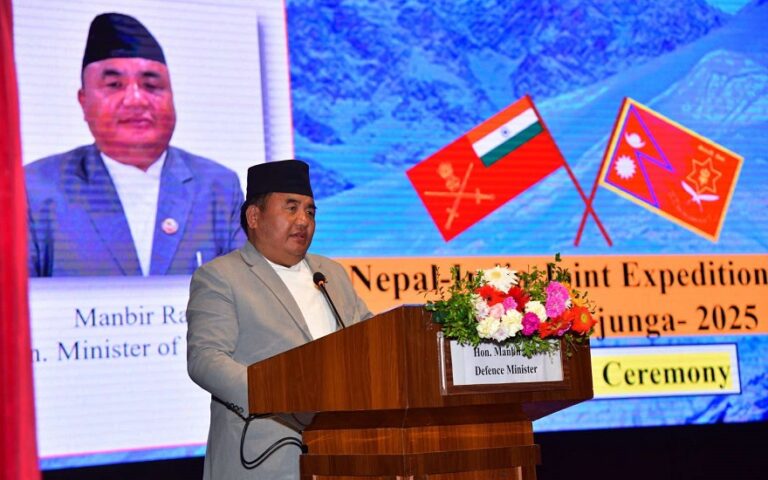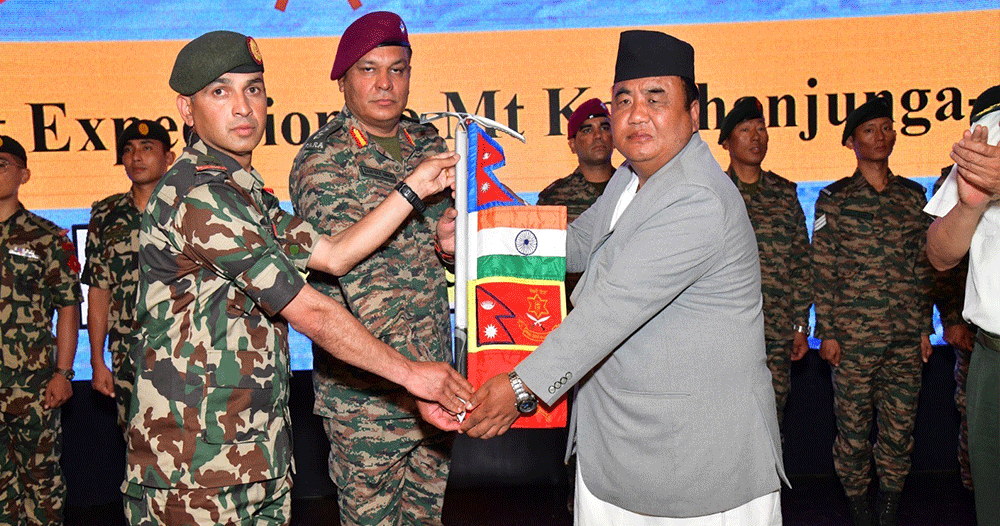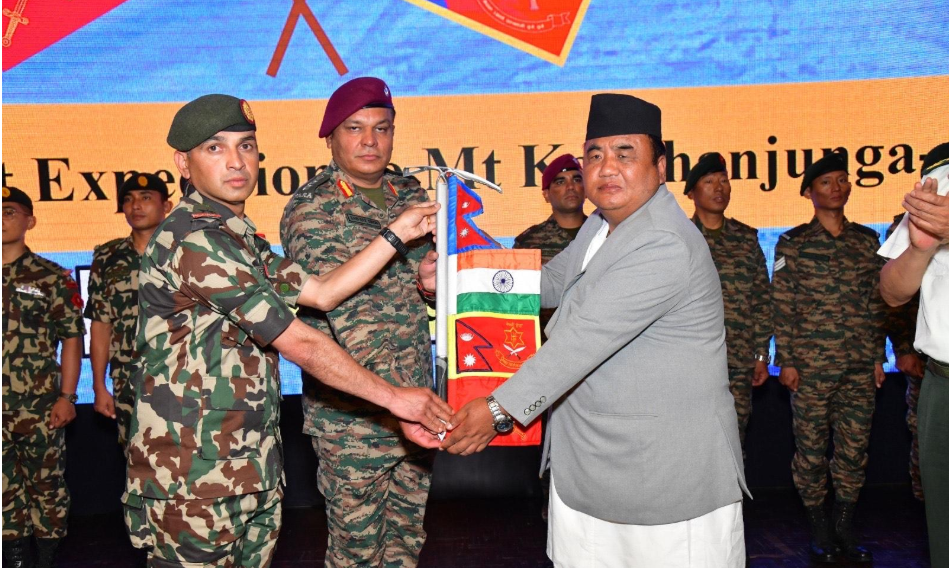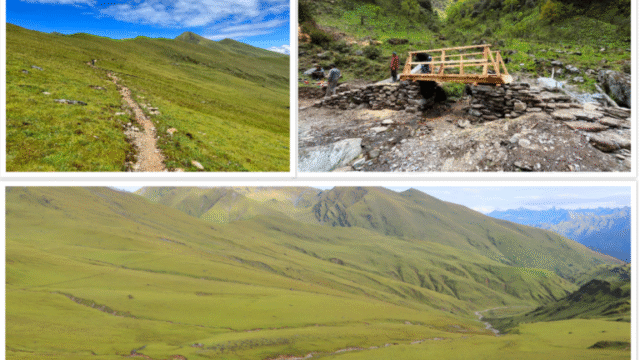Minister for Defense Hon. Manbir Rai has expressed confidence that the successful Nepal–India Joint Kanchenjunga Expedition 2025 will play a pivotal role in strengthening the long-standing bilateral ties between Nepal and India. Speaking at the flag handover ceremony held today at Jangi Adda, Minister Rai stated that the collaboration between the armed forces of the two nations during this expedition has added a new dimension to their military friendship and mutual trust.
A Milestone in Nepal-India Military Cooperation
This historic expedition marks the first-ever joint ascent of Mount Kanchenjunga by the Nepalese and Indian armies. Previously, the two armies had successfully carried out joint ascents of Mount Everest in 2003 and 2013, which were seen as symbolic milestones in bilateral cooperation. However, this is the first time both forces collaborated to summit the world’s third-highest peak, Kangchenjunga (8,586 meters), known for its technical difficulty and demanding terrain.
Minister Rai highlighted that the expedition demonstrated unwavering discipline, indomitable courage, strong determination, and above all, an exceptional level of coordination between the two military forces. “This accomplishment has not only set a new benchmark in mountaineering but also created a unique example of military cooperation, discipline, and friendship,” he said.
Formal Flag Handover Ceremony
At the official function, the flag representing the expedition was formally handed over by the team leader of the climbing group to Minister Rai and Chief of Army Staff (CoAS) General Prabhu Ram Sharma, represented at the event by Lt. General Nirmal Thapa. The symbolic flag handover marked the official conclusion of the mission, which had started several months ago.
Addressing the gathering, Lt. General Prem Dhwoj Adhikari, Head of the Military Operations Department, provided a concise overview of the expedition. He mentioned that the joint team had to overcome several natural and logistical challenges during the climb, which they did with courage, planning, and collaboration.

Participation and International Presence
The climbing team comprised a total of 15 members, including 10 from the Nepali Army and 5 from the Indian Army. The team successfully reached the summit of Kanchenjunga on Jestha 5 and 6 (corresponding to late May 2025), overcoming harsh weather conditions and difficult routes.
Before the actual summit, a “Flag-Off Ceremony” was held in New Delhi on Chaitra 21, 2081 B.S. in the presence of the Indian Defense Minister. This event formally inaugurated the expedition and emphasized the importance both countries placed on this joint mountaineering effort as a symbol of trust and cooperation.
Indian Military and Diplomatic Delegation
Lieutenant General Ajay Ramdev, the head of the Indian Army delegation, also addressed the ceremony, extending congratulations to all expedition members. He reiterated that the successful climb would further enhance the existing military ties and deepen the cultural and strategic relationship between Nepal and India.
He praised the leadership, resilience, and teamwork displayed by both armies and stressed that such initiatives build confidence, interoperability, and mutual respect at the highest levels of military collaboration.
Broader Significance for Nepal-India Relations
The presence of Indian Ambassador to Nepal, Mr. Naveen Srivastava, at the ceremony added a diplomatic dimension to the event. Ambassador Srivastava applauded the initiative and termed it an “exemplary milestone” in the long history of people-to-people and army-to-army relations between the two neighbors.

The event was also attended by high-ranking officials from the Nepali Army, the Government of Nepal, representatives of Trekking Agencies’ Association of Nepal (TAAN), members of the joint climbing team, and various media personnel. Their presence highlighted the wide-reaching implications of the mission, not only in the realm of mountaineering but also in tourism, diplomacy, and national pride.
Mountaineering as a Platform for Unity and Diplomacy
The Defense Minister emphasized that such collaborative expeditions could be used as a powerful platform to promote unity, resilience, and international cooperation. He pointed out that the Himalayas, often viewed as formidable barriers, can, in fact, serve as bridges of friendship and shared values between neighboring countries.
The joint ascent of Kanchenjunga has proven that military forces can go beyond traditional roles, contributing to peace-building, adventure diplomacy, and environmental awareness.
The successful Nepal–India Joint Kanchenjunga Expedition 2025 stands as a proud chapter in the history of Nepal-India cooperation. It celebrates not just a physical conquest of a towering peak, but also the enduring trust, friendship, and strategic alliance between the two nations. With both armies working shoulder to shoulder in extreme conditions, the expedition has laid the foundation for future collaborations that extend beyond borders, both literally and symbolically.
Such ventures serve as a reminder of the shared heritage of the Himalayan region and offer an inspiring vision of what regional partnerships can achieve through courage, planning, and mutual respect.






